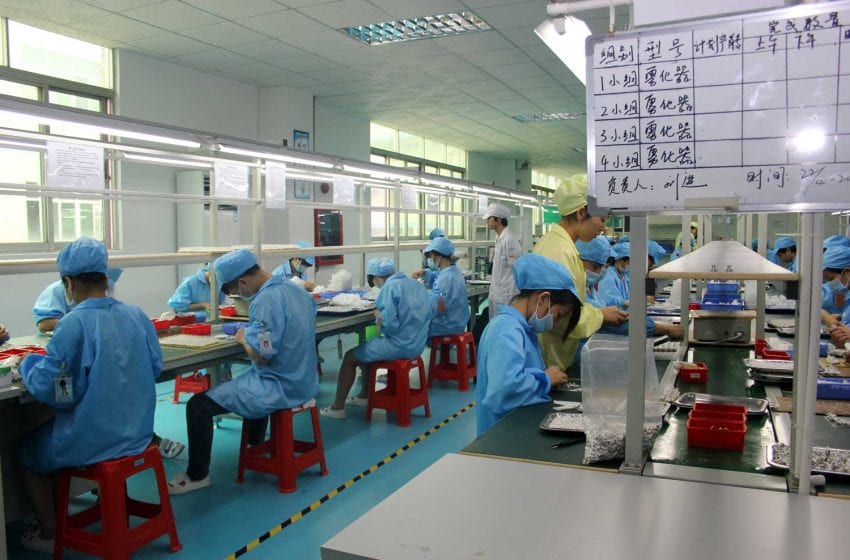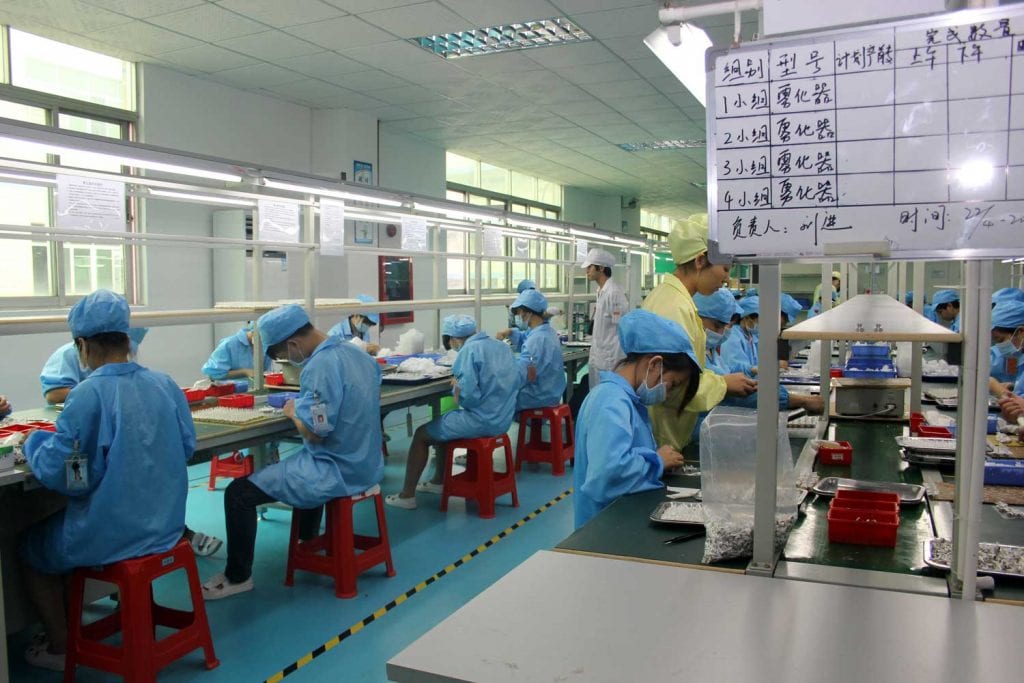The New Normal
- Also in TR Print Edition
- June 1, 2020
- 0
- 1
- 7 minutes read


Shenzhen’s vapor hardware manufacturers have resumed operations, but it’s hardly business as usual.
TR Staff Report
The Covid-19 outbreak hit Shenzhen hard. From mid-January to mid-February, authorities ordered factories and offices in the southeastern Chinese city to suspend their operations to prevent the spread of the coronavirus. That had severe implications for many supply chains, including those for vapor products.
Shenzhen is the world’s workshop for a wide variety of electronic products ranging from cutting-edge drones to ordinary lightbulbs. Its factories produce not only Apple’s iconic iPhone but also the anonymous circuitry that powers appliances around the globe. Many of the world’s electronic nicotine-delivery system (ENDS) manufacturers, too, are based in Shenzhen.
Because China was the first country to be hit by Covid-19 in 2019, it was also the first to start easing its lockdowns. Most Shenzhen ENDS companies restarted their operations in the second half of February. However, the disruption of the lockdown combined with pre-Covid challenges—such as the Chinese government’s November 2019 directive to cease internet sales of vapor products—and new working requirements such as social distancing are presenting formidable obstacles for ENDS manufacturers as they resume operations.
Tobacco Reporter spoke with Amei Zhang, senior economic analyst and China specialist at TMA, about the outlook for Shenzhen as the world’s vapor product manufacturing capital.
Tobacco Reporter: Please illustrate with some statistics the importance of Shenzhen to the global vapor business.
Amei Zhang: Over the past decade, the e-cigarettes produced in Shenzhen accounted for 90 percent of global ENDS production. According to statistics of the Electronic Cigarette Industry Committee of the China Electronics Chamber of Commerce, as of August 2018, there were 678 e-cigarette factories in China and there were 1,558 companies operating in the “electronic atomizer” category. Shenzhen-based manufacturers account for 86.7 percent of those 678 makers.
How severe was the Shenzhen lockdown? Were businesses required to cease operations altogether, or could they continue manufacturing at a low level?
On the evening of Jan. 23, Guangdong Province initiated a first-level response to a major public health emergency, and as a result, all factories were closed until Feb. 10. During that period, none of them could continue manufacturing even at a low level. Many ENDS companies restarted their operations between Feb. 16–19 while some started later because they had to wait for approval from the government.
By how much did the output of Shenzhen’s ENDS manufacturers decline following the lockdown?
There is no number regarding total output of ENDS production decline, but there is information about some specific cases.
The period between New Year’s Day and the Spring Festival on Jan. 24 is the traditional peak season for sales, but the outbreak of the coronavirus ended the peak season early. Electronic cigarettes companies faced difficulties in funding, sales and getting back to work.
Flow, a brand manufactured by Flowclub International, reportedly did not pay its employees for two months while [also] laying off 70 percent of its workforce. SnowPlus, another famous brand, laid off more than 50 percent of its employees. After the negative information about Flow became public, dealers began to sell many goods to pay off debts. Distributors reduced their product prices from CNY20 per piece to as low as CNY10 per piece while the official retail price of Flow is CNY39 per piece.
However, some brand-name e-cigarettes have proved very resistant to risks during the epidemic. Bode Electronic Cigarette for example on Feb. 18 started recruiting workers for more than 100 positions involving sales, operations, research and development, products and other departments.
Do you expect customers to reduce their reliance on Shenzhen by sourcing more vapor products from other sources in the wake of the crisis? Are there alternatives to Shenzhen?
In my view, currently, it is nearly impossible for the ENDS customers to reduce their reliance on Shenzhen or find alternatives. The reasons are as follows: 1) Many of Shenzhen’s e-cigarette producers have been in business as producers of small electronic devices since the 1990s and have lots of experience conducting foreign trade; 2) the supply chain is located in Shenzhen, which provides geographic convenience for upstream, middle stream and low stream companies; 3) over the past decade, those Shenzhen companies have accumulated overseas customers and strong skills in design and manufacturing—characteristics that help them easily attract capital from the domestic market. In short term, Shenzhen’s ENDS manufacturers are unreplaceable.
There are some signs, however, that should not be neglected. In Indonesia, there are now about 200 producers and traders of new-type tobacco products, although the Indonesian government prohibited e-cigarettes in November 2019.
There are also signs that Shenzhen companies have adjusted their supply chains to deal with the high tariffs from the U.S. in 2018. They split accessories, declare the origin as a third country or simply set up a factory in a third country to avoid U.S. tariffs. But recently, the United States has begun to strictly investigate whether the origin of goods and the names of declared products are consistent with the actual situation.
Whether the e-cigarette manufacturing supply chain [will] be gradually transferred overseas remains a question.
How do you expect the crisis to impact the Shenzhen manufacturers in the future?
In this pandemic, larger and more competitive companies have more chance than small companies to survive. Therefore, the ENDS sector may reshape its current structure while small or less competitive companies are likely to merge, be acquired or go out of business.
It has been reported that Flowclub is now producing face masks, which may help the company to compensate for the losses it incurred during the lockdown.
Whether Shenzhen will recover its previous output is difficult to say.


